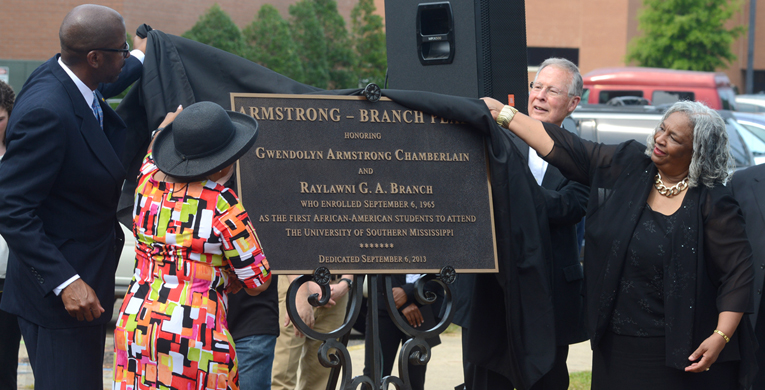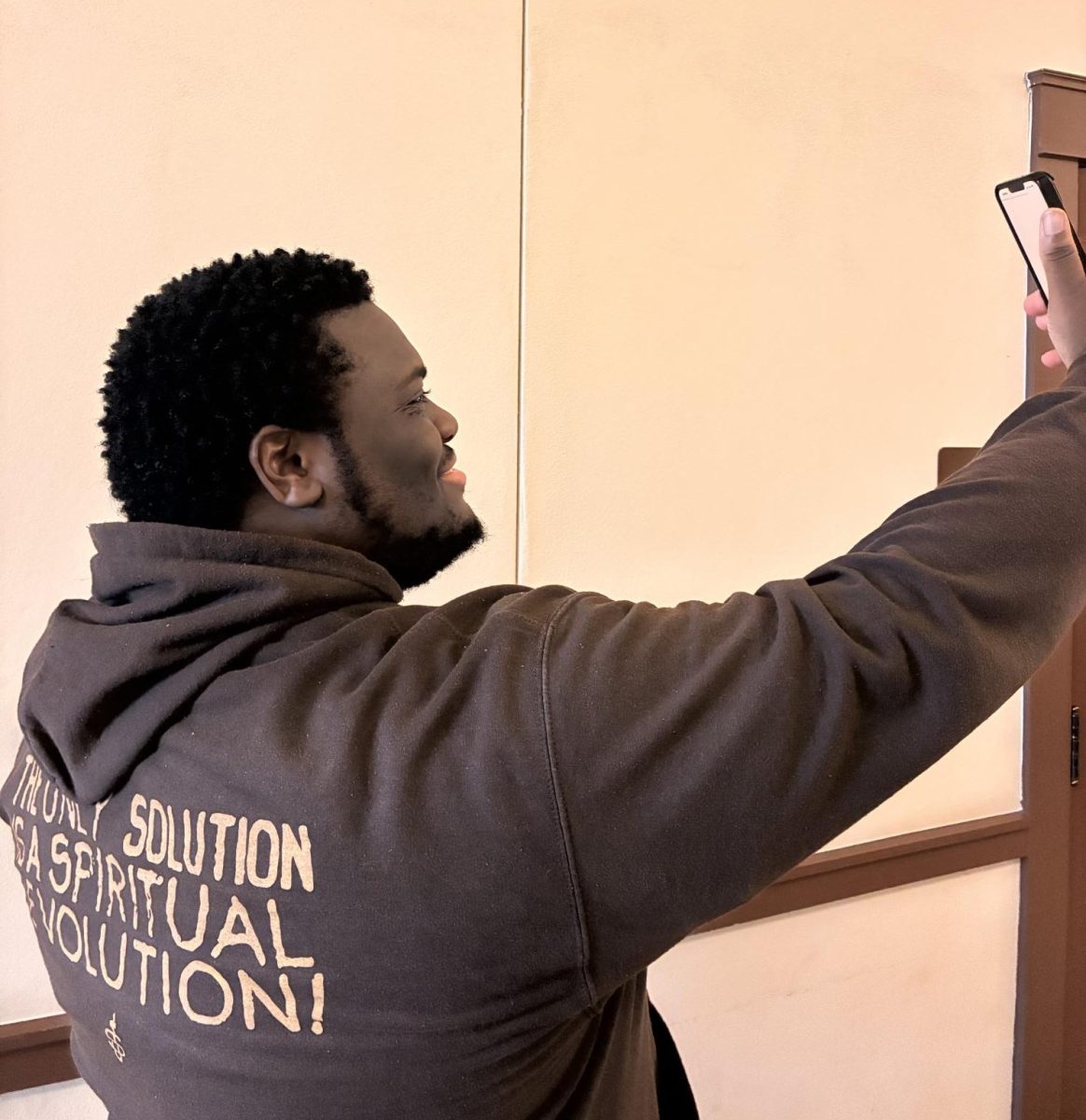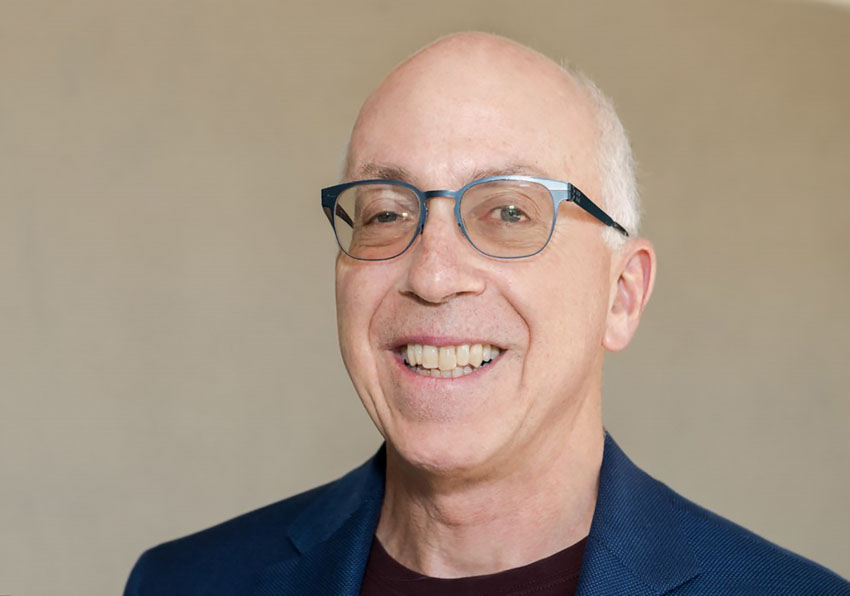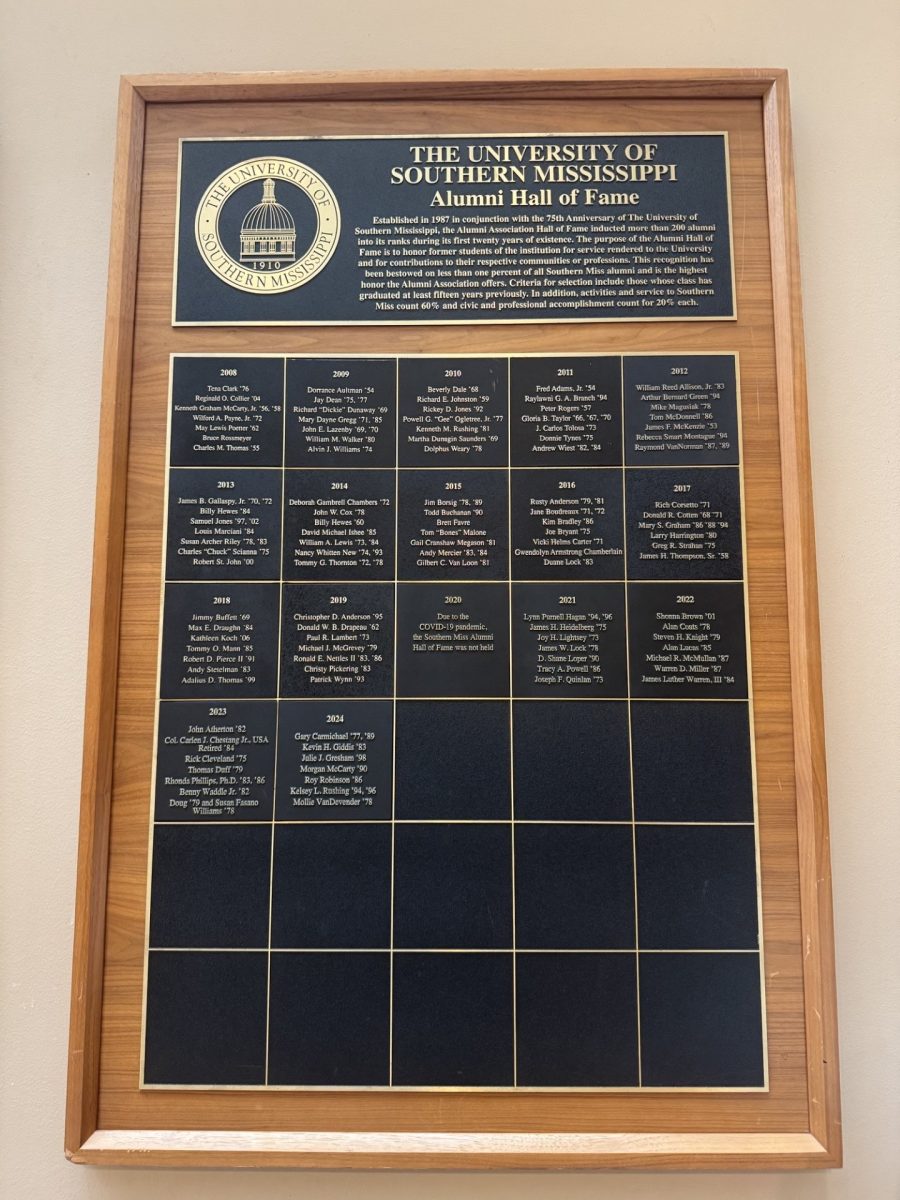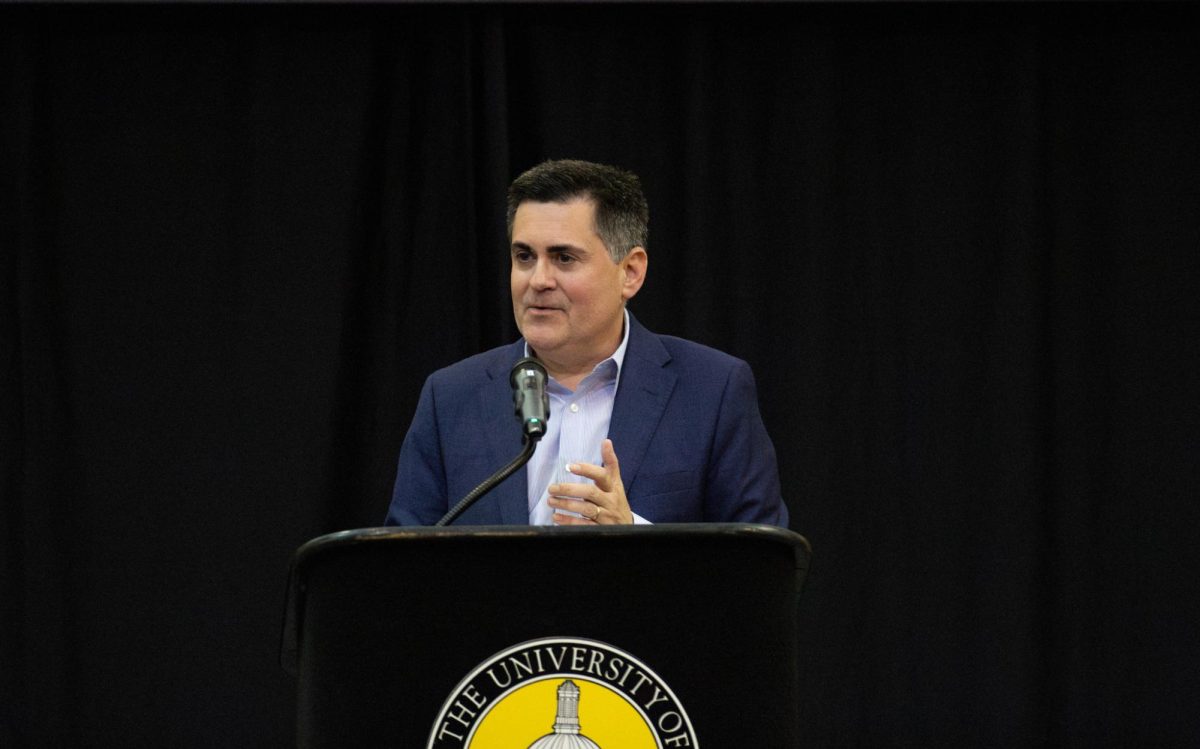
Mary Alice Truitt/Printz
The first African-American students to attend The University of Southern Mississippi were honored at Friday’s naming ceremony of Armstrong-Branch Plaza.
The recently completed plaza was named to honor Southern Miss alumnae Gwendolyn Elaine Armstrong and Raylawni Young Branch, and was dedicated on the 48th anniversary of the successful end of segregation at USM.
Both women attended their first day of classes at the university on Sept. 6, 1965.
“Somebody had to go first,” Raylawni Branch said. “Somebody had to go along and deal with whatever might happen so others could come along and not give it a thought.”
The plaza, which is located between the Liberal Arts Building and Joseph A. Greene Hall, was funded by a Mississippi Department of Transportation grant of $675,000. The plaza is complete with brick paving, decorative lighting, benches, bike racks, trash receptacles and emergency call stations.
Both of the MDOT grants contributed 80 percent of the project’s costs, while the university contributed the remaining 20 percent.
During the spring 2013 semester, senators in the Student Government Association passed a resolution to name a portion of the pedestrian plaza after Armstrong and Branch. Interim President Aubrey K. Lucas approved the SGA resolution on his next to last day in office in 2013.
After only a few days in the president’s office, Bennett affirmed the resolution. He immediately began gathering the funds necessary for the naming project, as well as the means to plan the naming event.
“September 6, 1965, [these] two brave women quietly and without incident, ended segregation at The University of Southern Mississippi,” Bennett said at the ceremony.
“It was done very peacefully,” Lucas recalled of the day the women began classes. “We didn’t make a big deal of it. We didn’t call in photographers for them to pose … To their credit, they didn’t feel the need to make news. They were here to get an education.”
One student felt the admittance of Armstrong and Branch paved the way for all nationalities and minorities to attend Southern Miss as easily as they can today.
“It’s a landmark of how women of color can make a stand in their hometown whenever they had the opportunity to go elsewhere,” said LaToursha Ezell, a senior public health and psychology major.
“It means that you just keep going and you look at other options to succeed, even though obstacles get in your way,” she said. “USM has always been a family, and that’s the reason I’m here.”
For more information about MDOT, visit www.GoMDOT.com.

























